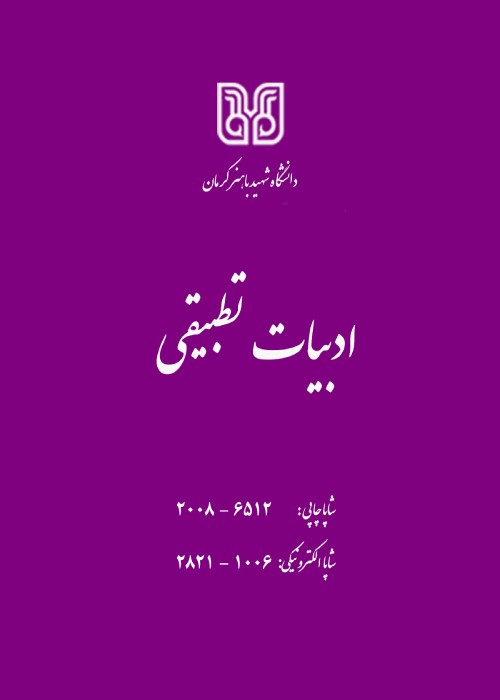Comparative analysis of resistance and constancy themes in the poems of "Shafigh Habib" and "Salman Harati"
Given the specific conditions of Iran and Palestine, resistance is prominently manifested in the literature and poetry of both nations. Despite having different individual and spiritual characteristics, as an Iranian and a Palestinian poet, Salman Harati and Shafiq Habib have had mutual social and literary experiences; they have both witnessed tyranny and war looming over their nations, hence reflecting upon the resistance literature in their poems. Analysis of their poems can be an effective step towards portraying the state of the suffered people of their nations that is painted through poetry. In addition, one could become familiar with religious, social, and cultural commonalities of both countries through poetry. The present study was conducted with the purpose of examining the common resistance themes in poems by Shafiq Habib and Salman Harati; it is also attempted to identity similarities and differences between how these themes are reflected. The hypothesis of the study is that since both poets have experienced relatively same conditions in their country, they have adopted a similar approach in their poetry. However, individual, spiritual, and social dimensions of the lives of both poets have also affected their expression of their thoughts and emotions, resulting in a number of differences and similarities in their poems.
The present study was conducted using the comparative method based upon the American School, through the approach of authenticity of similarity. This school considers literary communications and effects as one of the major research backgrounds in comparative literature, albeit through a more extensive perspective. Accordingly, finding historical evidence and positivist evidence is not insisted upon while it is acceptable that certain similarities between works of literature stems from the common spirit of all humans. Such comparison is carried out descriptively, using content analysis; first, the themes of resistance literature are laid out in brief followed by an extensive description of said themes in poems by Salman Harati and Shafiq Habib. Ultimately, themes are processed so as to point out the similarities and differences between the two poets.
Both Shafiq Habib and Salman Harati are in love with their countries with an intertwined sense of religiosity and nationalism. Salman has expressed love for country through nature and spirituality while Shafiq has done so using hopes, wishes, and sense of alienation. In addition to addressing the states of their own people, both poets have offered a breath of hope; accordingly, some of the most highlighted themes of both poets involve giving hope, hope for children, and the emergence of the savior. In this respect, Shafiq has mixed hope with the enemy’s threat and humiliation. Salman Harati and Shafiq Habib protest the “don’ts” and the wrongdoings of both foreign and domestic enemies in order to mend and develop the status quo. Shafiq Habib has bravely criticized the Arab rulers and foreign enemies. However, clarity has not always been the direction of these two poets; yet, the political environment and verbal aesthetics have adorned their poetry with symbolic expression to enable them to offer their intended themes to the audience in a suitable manner.
The homelands of Shafiq Habib and Salman Harati have always been involved with wars and repelling violation, resulting in the themes of resistance literature to become a main component in their poetry. This inquiry examined themes such as patriotism, hope, criticism and demonstration, and the use of symbols and codes in poems by these two poets. In comparison of their poems in light of resistance themes, a number of significant similarities and differences were found. Certain differences include the type of expressing enthusiasm for the nation, Shafiq’s challenging tone in giving hope and his precision in criticizing the leaders of his country and chastising the Arab rulers while these criticisms were not observed in Salman’s poems. Shafiq chastises Arab rulers and protests the lack of a unique leader; yet Harati describes Imam Khomeini in a comprehensive manner and introduces him as a powerful leader for both himself and the nation. Nevertheless, similarities in their poems include love of the country, giving hope to children, awaiting the savior, reformist criticism, protest in line with development and symbolic expression.
- حق عضویت دریافتی صرف حمایت از نشریات عضو و نگهداری، تکمیل و توسعه مگیران میشود.
- پرداخت حق اشتراک و دانلود مقالات اجازه بازنشر آن در سایر رسانههای چاپی و دیجیتال را به کاربر نمیدهد.


